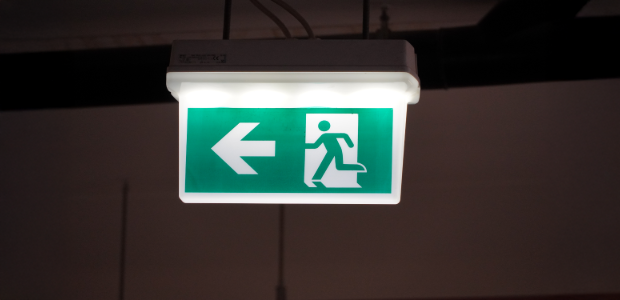
Why Your Start-Up Can't Afford to Ignore Safety Signage (And What Happens If You Do)
Most founders signing their first office lease are thinking about desk layouts, internet speeds, and how the space will look on Instagram. What they're not thinking about is the stack of legal obligations that comes with those keys. Beyond sorting out insurance and fire certificates, there's a surprisingly easy requirement to miss: workplace safety signage.
Yes, signs. The things on the walls. Not exactly the most exciting part of building a company. When you're trying to nail product-market fit or convince investors your idea has legs, safety signs barely register as a concern. But the Health and Safety Executive won't care about your growth metrics if your workplace isn't compliant.
What Actually Counts as "Mandatory"
Mandatory signs are safety signs that inform staff and visitors of which actions they need to take in different parts of your building. Think of those blue circular signs showing someone wearing goggles or gloves—instructions like "Eye Protection Must Be Worn" or "Hand Washing Required."
These signs exist because of regulations introduced in 1996 that adopted European safety directives into British law. They're still legally binding. When your risk assessment shows that certain areas need protective equipment or specific procedures, you have to put up the right signs. There's no wiggle room here.
Here's where start-ups trip up: many founders have never done a workplace risk assessment before. HSE data shows smaller companies get caught out on safety requirements far more often than larger ones. Usually, it's not intentional—people simply don't realize what's required until an inspector shows up.
The Real Cost of Non-Compliance
The consequences go beyond theoretical. A Manchester e-commerce start-up got hit with a £12,000 fine after an HSE inspector found their packaging warehouse lacked mandatory signage. A London fintech company had their lease cancelled when the landlord discovered missing fire safety and evacuation signs—something they hadn't even considered when moving in.
Financial penalties hurt, but they're not the worst outcome. If someone gets injured somewhere that should have had warning or instruction signs, you're facing injury claims, possible criminal charges, and the kind of press coverage that can sink a young company.
The HSE's guidance on risk assessment treats signage as a basic part of your duty of care to employees and visitors. It's mandatory, not advisory.
Getting It Right From Day One
Start-ups actually have an edge here compared to older companies trying to fix gaps in their compliance. You're building everything from scratch anyway. Add safety signs to the same checklist as desks and computers. Include them in your initial fit-out budget. Treat them as standard operational infrastructure, because legally speaking, that's exactly what they are.
The question really comes down to risk tolerance. Can you afford proper safety signage? Absolutely—signs cost a fraction of what you're spending on laptops and software subscriptions. Can you afford to skip them? That's the gamble with potentially severe consequences that no sensible founder should take.

